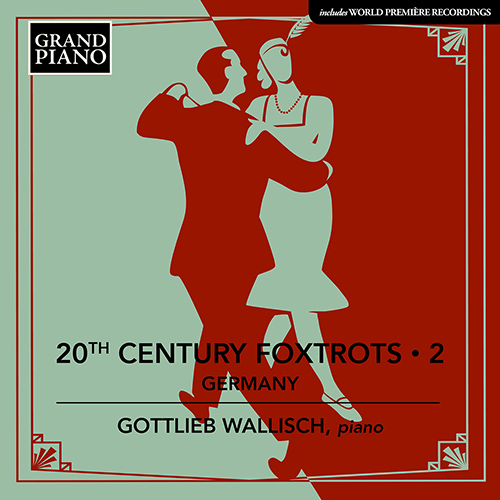
About this Release
“In the aftermath of WWI Europe was hit by a wave of new dances: foxtrots, shimmies, Bostons or Charlestons. But, in contrast to other European countries, Germany reacted in a more complex way to this culturally pervasive phenomenon. Partly because the Versailles Treatise had banned cultural goods from abroad, German composers and their audiences felt jazz as a sort of forbidden attraction, difficult if not impossible to hear in its original form until well into the late 1920s. Still, it is fascinating to see how young composers such as Hindemith, Weill and Wolpe, and also older ones, such as D'Albert and Niemann were instinctively seduced by the new rhythms and styles. In many of these jazzy pieces I do feel truly "German" qualities: musical craftsmanship of high calibre and an earnest ambition to link traditional compositional skills with the new musical language. The results are all sweeping and unique pieces - fantastic music from a century ago that mostly went into oblivion.” — Gottlieb Wallisch
20TH CENTURY FOXTROTS • 2
Germany
- Gottlieb Wallisch, piano
The first volume in this series traced the inter-war craze for carefree dance music in Austria and the Czech Lands (see GP813). This latest album focuses on Germany where jazz-influenced music flourished from the mid-1920s onwards even in the face of some social, political and racial opposition. Cabarets and dancehalls rejected this nationalist resistance and the Weimar Republic rejoiced in a cross-pollination of symphonic jazz and Kunstjazz—a fusion of dance and classical elements. The many previously unrecorded pieces here chart the progress of this vigorous musical rejuvenation.
This recording was made on: Steinway, Model D, number 544063
Tracklist
|
Hindemith, Paul
|
|
1
Tuttifäntchen, Scene 1: Tanz der Holzpuppen, Foxtrott (version for piano) (1922) (00:02:50)
|
|
Bornschein, Eduard
|
|
2
Blues (1927) (00:01:05)
|
|
Künneke, Eduard
|
|
3
Der Vetter aus Dingsda, Op. 13, Act II: Sieben Jahre lebt' ich in Batavia - Magdelein, zart und fein (arr. H.J. Vieth for piano as Batavia Fox-Trot) (1921) (00:02:38)
|
|
Albert, Eugen d'
|
|
4
Blues (1930) (00:01:59)
|
|
Erdmann, Eduard
|
|
5
Fox Trot in C Major (1923) (00:03:04)
|
|
Gieseking, Walter
|
|
3 Dance Improvisations (1926) (00:07:48 )
|
|
6
No. 1. Tempo di Foxtrot (00:03:22)
|
|
7
No. 2. Schnell (00:02:03)
|
|
8
No. 3. Tempo di Charleston (00:02:20)
|
|
Finke, Fidelio Fritz
|
|
9
10 Kinderstücke: No. 10. Shimmy (1927) (00:01:59)
|
|
Butting, Max
|
|
10
15 Kurze Klavierstücke, Op. 33: No. 14. Tango (1928) (00:01:26)
|
|
Mittmann, Leopold
|
|
Konzert Jazz-Suite (1929) (00:05:55 )
|
|
11
I. Charleston (00:01:31)
|
|
12
II. Blues (00:02:27)
|
|
13
III. Hot (00:01:56)
|
|
Herbst, Kurt
|
|
14
Jazz-Etüde (1928) (00:03:55)
|
|
Sekles, Bernhard
|
|
15
Kleiner Shimmy () (00:00:36)
|
|
Niemann, Walter Rudolph
|
|
Moderne Tanzsuite, Op. 115 () (00:13:04 )
|
|
16
I. Blues (00:02:15)
|
|
17
II. Valse Boston (00:03:27)
|
|
18
III. Tempo di Charleston (00:02:56)
|
|
19
IV. Tango (00:02:35)
|
|
20
V. Negertanz (00:01:42)
|
|
Wolpe, Stefan
|
|
21
6 Klavierstücke (1920-1929): No. 3. Rag-Caprice (1927) (00:01:07)
|
|
22
6 Klavierstücke (1920-1929): No. 4. Tango (1927) (00:03:18)
|
|
Weill, Kurt
|
|
23
Die Dreigroschenoper (The Threepenny Opera), Act II: Zuhalterballade (arr. as Tango-Ballade for piano) (1928) (00:02:56)
|
|
Goehr, Walter
|
|
David Golder (arr. for piano) (1931) (00:03:37 )
|
|
24
Fox Trot (00:01:57)
|
|
25
Tango (00:01:38)
|
|
Borris, Siegfried
|
|
26
Quick-Fox (c. 1934) (00:01:28)
|
|
27
Tango (c. 1934) (00:01:57)
|
|
Weill, Kurt
|
|
Marie Galante (version for piano) (1934) (00:04:52 )
|
|
28
Scène au Dancing (00:02:23)
|
|
29
Tango, "Youkali" (00:02:28)
|
The Artist(s)
 Born in Vienna, Gottlieb Wallisch first appeared on the concert platform when he was seven years old, and at the age of twelve made his debut in the Golden Hall of the Vienna Musikverein. A concert directed by Yehudi Menuhin in 1996 launched Wallisch’s international career: accompanied by the Sinfonia Varsovia, the seventeen-year-old pianist performed Beethoven’s ‘Emperor’ Concerto.
Since then Wallisch has received invitations to the world’s most prestigious concert halls and festivals including Carnegie Hall in New York, Wigmore Hall in London, the Cologne Philharmonie, the Tonhalle Zurich, the NCPA in Beijing, the Ruhr Piano Festival, the Beethovenfest in Bonn, the Festivals of Lucerne and Salzburg, December Nights in Moscow, and the Singapore Arts Festival. Conductors with whom he has performed as a soloist include Giuseppe Sinopoli, Sir Neville Marriner, Dennis Russell Davies, Kirill Petrenko, Louis Langrée, Lawrence Foster, Christopher Hogwood, Martin Haselböck and Bruno Weil.
Orchestras he has performed with include the Vienna Philharmonic and Vienna Symphony Orchestras, the Royal Liverpool Philharmonic, the Gustav Mahler Youth Orchestra, the Frankfurt Radio Symphony, the Festival Strings Lucerne, the Franz Liszt Chamber Orchestra in Budapest, the Musica Angelica Baroque Orchestra in Los Angeles, and the Stuttgart Chamber Orchestra.
Born in Vienna, Gottlieb Wallisch first appeared on the concert platform when he was seven years old, and at the age of twelve made his debut in the Golden Hall of the Vienna Musikverein. A concert directed by Yehudi Menuhin in 1996 launched Wallisch’s international career: accompanied by the Sinfonia Varsovia, the seventeen-year-old pianist performed Beethoven’s ‘Emperor’ Concerto.
Since then Wallisch has received invitations to the world’s most prestigious concert halls and festivals including Carnegie Hall in New York, Wigmore Hall in London, the Cologne Philharmonie, the Tonhalle Zurich, the NCPA in Beijing, the Ruhr Piano Festival, the Beethovenfest in Bonn, the Festivals of Lucerne and Salzburg, December Nights in Moscow, and the Singapore Arts Festival. Conductors with whom he has performed as a soloist include Giuseppe Sinopoli, Sir Neville Marriner, Dennis Russell Davies, Kirill Petrenko, Louis Langrée, Lawrence Foster, Christopher Hogwood, Martin Haselböck and Bruno Weil.
Orchestras he has performed with include the Vienna Philharmonic and Vienna Symphony Orchestras, the Royal Liverpool Philharmonic, the Gustav Mahler Youth Orchestra, the Frankfurt Radio Symphony, the Festival Strings Lucerne, the Franz Liszt Chamber Orchestra in Budapest, the Musica Angelica Baroque Orchestra in Los Angeles, and the Stuttgart Chamber Orchestra. The Composer(s)
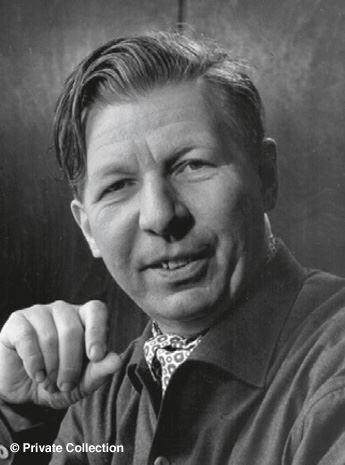 Siegfried Borris was born in Berlin as the son of a Russian Jew who had converted to Catholicism. From 1927 he was a pupil of Hindemith, and from his master he got both a jolly side, and a positive attitude towards craftsmanship and Gebrauchsmusik (‘utility music’). A very prolific composer, he liked to produce for varied instrumental combinations (accordions, mandolin orchestras, Alphorn, etc.).
Siegfried Borris was born in Berlin as the son of a Russian Jew who had converted to Catholicism. From 1927 he was a pupil of Hindemith, and from his master he got both a jolly side, and a positive attitude towards craftsmanship and Gebrauchsmusik (‘utility music’). A very prolific composer, he liked to produce for varied instrumental combinations (accordions, mandolin orchestras, Alphorn, etc.). 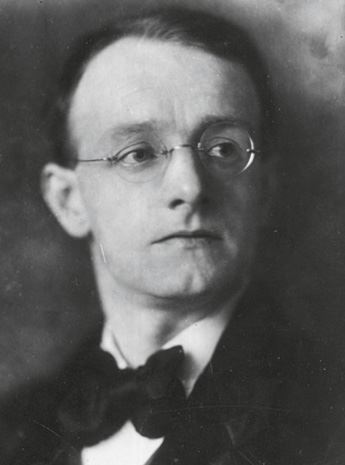 Fidelio F. Finke, now almost forgotten, but highly respected in his early years, suffered, as happened to a few non-Jewish composers, from his own political unreliability: A Bohemian-German composer, during the Nazi occupation of Czechoslovakia, he showed pro-Nazi sympathies, so that, when the Russian troops freed the nation, he was imprisoned and brought to Moscow, where he attempted suicide in 1945. He was then sent to Dresden, where he remained for the rest of his life and career, now as a socialist composer, member of the communist party, and as prolific as ever. His Shimmy is more or less a foxtrot, from which it was musically almost undistinguishable, if not for the fact that the shimmy had some breaks where the music was suspended, or played sotto voce, to allow time for the dancers to shake their shoulders (a feature which is not evident in Finke’s piece).
Fidelio F. Finke, now almost forgotten, but highly respected in his early years, suffered, as happened to a few non-Jewish composers, from his own political unreliability: A Bohemian-German composer, during the Nazi occupation of Czechoslovakia, he showed pro-Nazi sympathies, so that, when the Russian troops freed the nation, he was imprisoned and brought to Moscow, where he attempted suicide in 1945. He was then sent to Dresden, where he remained for the rest of his life and career, now as a socialist composer, member of the communist party, and as prolific as ever. His Shimmy is more or less a foxtrot, from which it was musically almost undistinguishable, if not for the fact that the shimmy had some breaks where the music was suspended, or played sotto voce, to allow time for the dancers to shake their shoulders (a feature which is not evident in Finke’s piece). 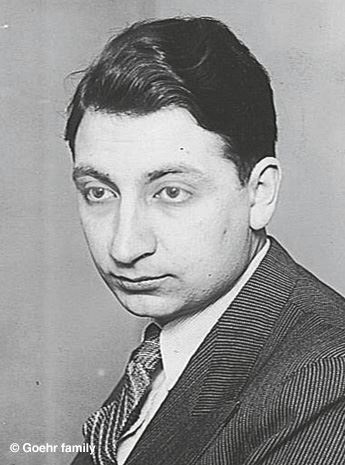 Walter Goehr was a pupil of Schoenberg and Krenek. A life-long friend of Eisler, and collaborator of Brecht and Feuchtwanger, he was surely one of the busiest musicians for the radio, who also wrote the first radio opera, Malpopita, in 1931. It is not unexpected that he was much sought after also as a movie composer at home as well as abroad, writing, among others, the score for David Golder, a French drama film adapted from Irène Némirowsky’s successful 1929 novel. It had been said that as a musician Walter Goehr could do everything, except write catchy melodies and hits, but the Fox Trot and the amiable Tango debunk this negative myth.
Walter Goehr was a pupil of Schoenberg and Krenek. A life-long friend of Eisler, and collaborator of Brecht and Feuchtwanger, he was surely one of the busiest musicians for the radio, who also wrote the first radio opera, Malpopita, in 1931. It is not unexpected that he was much sought after also as a movie composer at home as well as abroad, writing, among others, the score for David Golder, a French drama film adapted from Irène Némirowsky’s successful 1929 novel. It had been said that as a musician Walter Goehr could do everything, except write catchy melodies and hits, but the Fox Trot and the amiable Tango debunk this negative myth. 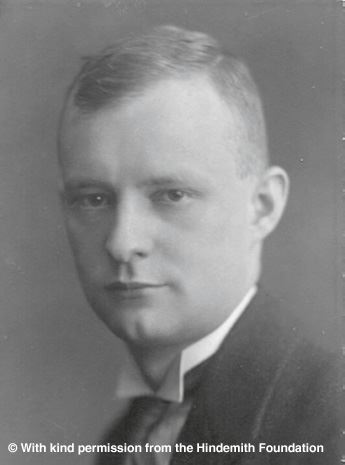 Respected as one of the most distinguished viola players of his time, Hindemith devoted the earlier part of his career to performance, first as a violinist and then as a viola player in the Amar-Hindemith Quartet, while developing his powers as a composer and his distinctive theories of harmony and of the place of the composer in society. His name is particularly associated with the concept of Gebrauchsmusik, and the composer as craftsman. He was prolific in composition and wrote music in a variety of forms. Attacked by the National Socialists, he left his native Germany in 1935, taking leave from the Berlin Musikhochschule where he had served as professor of composition for some eight years. In 1940 he settled in the United States, teaching at Yale University, a position he combined after the War with a similar position at the University of Zurich. He died in his native city of Frankfurt in 1963.
Respected as one of the most distinguished viola players of his time, Hindemith devoted the earlier part of his career to performance, first as a violinist and then as a viola player in the Amar-Hindemith Quartet, while developing his powers as a composer and his distinctive theories of harmony and of the place of the composer in society. His name is particularly associated with the concept of Gebrauchsmusik, and the composer as craftsman. He was prolific in composition and wrote music in a variety of forms. Attacked by the National Socialists, he left his native Germany in 1935, taking leave from the Berlin Musikhochschule where he had served as professor of composition for some eight years. In 1940 he settled in the United States, teaching at Yale University, a position he combined after the War with a similar position at the University of Zurich. He died in his native city of Frankfurt in 1963.  As well as a gifted pianist and composer Walter Niemann was a respected intellectual and author of numerous scholarly and literary works—the most renowned of which was Brahms, published in 1920 then translated into many languages. Meister des Klaviers: Die Pianisten der Gegenwart und der letzen Vergangenheit (Master of the Piano: Past and Present) was published in 1919 and was long considered a classic. He also wrote popular biographies of composers; that of Brahms emphasized the composer’s North German roots at the expense of his later Viennese years. As a reviewer he was often outspoken in his criticism of ‘pathological’ and ‘sensuous’ composers such as Richard Strauss, Mahler and Schoenberg, and was threatened in 1910 with a libel suit by Reger. Conversely, he praised nationalists and folk-influenced composers such as Pfitzner, Sibelius and MacDowell, and was influential in the popularizing of Scandinavian composers in Germany. Following the Second World War, Niemann’s idiom fell out of favour: he died largely neglected in Leipzig on 17 June 1953.
As well as a gifted pianist and composer Walter Niemann was a respected intellectual and author of numerous scholarly and literary works—the most renowned of which was Brahms, published in 1920 then translated into many languages. Meister des Klaviers: Die Pianisten der Gegenwart und der letzen Vergangenheit (Master of the Piano: Past and Present) was published in 1919 and was long considered a classic. He also wrote popular biographies of composers; that of Brahms emphasized the composer’s North German roots at the expense of his later Viennese years. As a reviewer he was often outspoken in his criticism of ‘pathological’ and ‘sensuous’ composers such as Richard Strauss, Mahler and Schoenberg, and was threatened in 1910 with a libel suit by Reger. Conversely, he praised nationalists and folk-influenced composers such as Pfitzner, Sibelius and MacDowell, and was influential in the popularizing of Scandinavian composers in Germany. Following the Second World War, Niemann’s idiom fell out of favour: he died largely neglected in Leipzig on 17 June 1953. 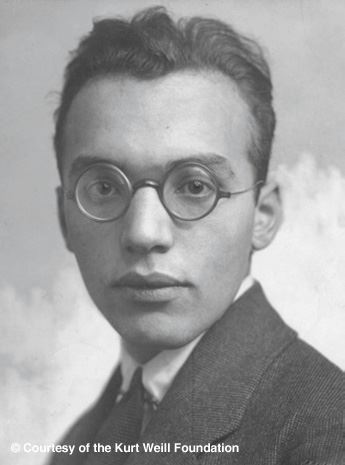 Kurt Weill was an important figure in German musical life during the period of the Weimar Republic. He left Germany in 1933 and later became a citizen of the United States of America, turning his musical attention to compositions for Broadway.
Kurt Weill was an important figure in German musical life during the period of the Weimar Republic. He left Germany in 1933 and later became a citizen of the United States of America, turning his musical attention to compositions for Broadway. 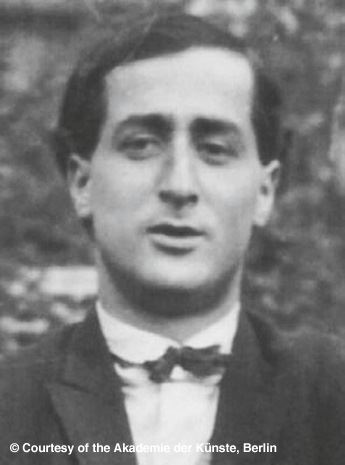 Born in Berlin, Stefan Wolpe studied there at the Klindworth-Scharwenka Conservatory, later leaving home to take refuge in an artists’ commune. He attended Busoni’s master-classes and was involved in the artistic Dadaism movement, also working as an accompanist for silent films and as a bar pianist. At the advent of National Socialism he moved briefly to Vienna, where he had lessons with Berg, and then, by way of Romania, to Palestine. In 1938 he moved to New York, seeking less conservative musical surroundings. In the United States he became an influential teacher at various establishments, continuing his association with leading innovative artists and musicians, his colleagues including John Cage and Lou Harrison. His pupils included Morton Feldman and Charles Wuorinen.
Born in Berlin, Stefan Wolpe studied there at the Klindworth-Scharwenka Conservatory, later leaving home to take refuge in an artists’ commune. He attended Busoni’s master-classes and was involved in the artistic Dadaism movement, also working as an accompanist for silent films and as a bar pianist. At the advent of National Socialism he moved briefly to Vienna, where he had lessons with Berg, and then, by way of Romania, to Palestine. In 1938 he moved to New York, seeking less conservative musical surroundings. In the United States he became an influential teacher at various establishments, continuing his association with leading innovative artists and musicians, his colleagues including John Cage and Lou Harrison. His pupils included Morton Feldman and Charles Wuorinen. Reviews
“This is intoxicating fun: a disc of foxtrots from post-World War I Germany. Wallisch’s playing combines virtuosity with the lightest of touches.” – The Arts Desk
“Gottlieb Wallisch plays Hindemith with the easy, relaxed swing of a Joplin rag. Charming!” – Fanfare
“Wallisch performs these pieces and their varying tempos with excellent pianism and grace. … As a follow-up to Volume 1, this new edition is outstanding.” – American Record Guide
“Gottlieb Wallisch is clearly committed to this genre of music. It is played here with swing, verve, and a comprehensive understanding of the technical requirements of this style. There is nothing condescending or patronising.” – MusicWeb International
“One of the year’s most surprising and consistently charming recording projects continues to gather steam. The second volume of the pianist Gottlieb Wallisch’s “20th Century Foxtrots” compendium—this time focused on works by German composers—follows up on the sprightly success of the initial set, which was devoted to works by Austrian and Czech musicians.” – The New York Times
“Fabulous playing, and there are more Wallisch discs to come.” – Yorkshire Post
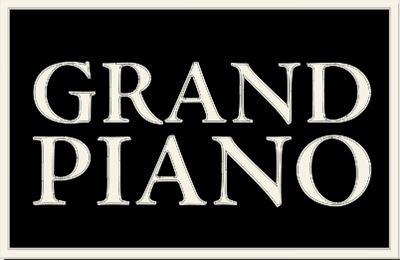
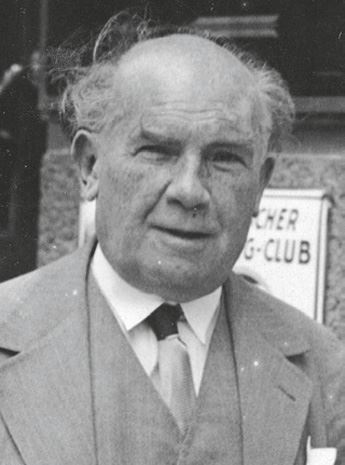

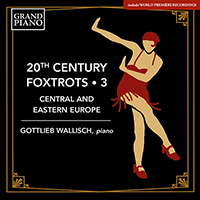
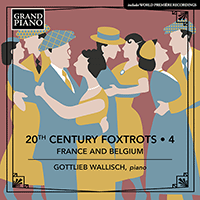
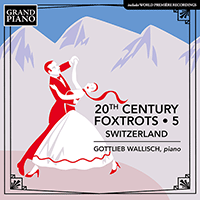


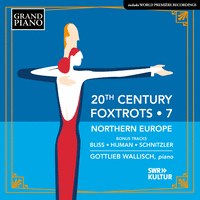
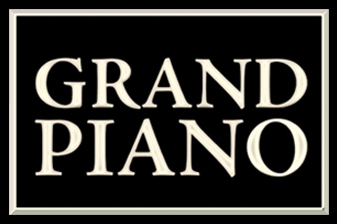 Grand Piano has gained a reputation for producing high quality recordings of rare keyboard gems. Dedicated to the exploration of undiscovered piano repertoire, the label specialises in complete cycles of piano works by many lesser-known composers, whose output might otherwise have remained unknown and unrecorded.
Grand Piano has gained a reputation for producing high quality recordings of rare keyboard gems. Dedicated to the exploration of undiscovered piano repertoire, the label specialises in complete cycles of piano works by many lesser-known composers, whose output might otherwise have remained unknown and unrecorded.






